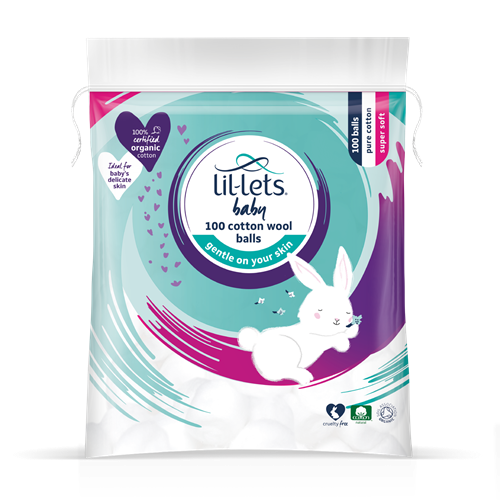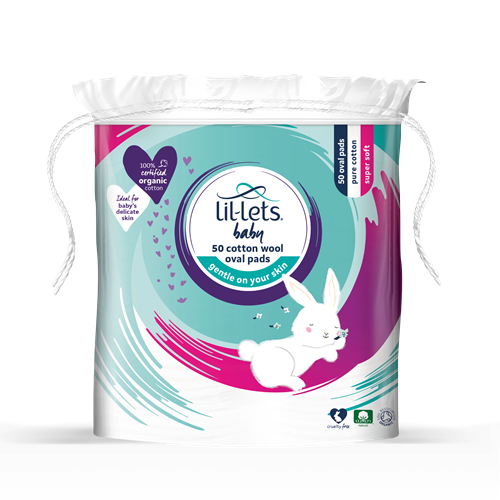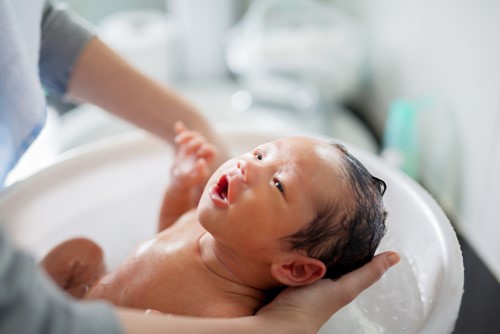Taking care of your baby in those first few weeks can be an anxious time for many parents. How often...or how little do you bathe your little one?
Even though it’s fine for your baby to have a daily bath if it soothes them, they really only need to be bathed 2-3 times a week. For the rest of the time and in between, "top and tailing" is the best way to keep your baby clean, fresh, and comfortable.
There’s no right or wrong time of the day to bathe your baby; choose a time that works for you and when you feel less rushed and in those first few weeks, having your partner or a family member alongside you can be reassuring as you find the best routine.
As your baby gets older, you may find an early evening bath helps them settle down better for the night. Ultimately, be guided by your baby and the needs of the rest of the family.
Firstly, pick a time when your baby is content and awake. Avoid bathing immediately after a feed or if your baby is hungry, as this will only lead to them becoming agitated, making it an upsetting experience for both of you.
Now get organised! Having everything to hand will be so helpful and ensure bathtime is a safe environment for your baby with all your attention on them, and if the phone or the doorbell rings…let it!

Make sure the room is nice and warm with the lights not too bright. The water should be no warmer than 37-38°C (98.6-100.4°F), and you can use your wrist or a thermometer to test the water before placing your baby inside.
On a changing mat, slowly and gently undress your baby. This is often a time when babies can be alarmed and feel vulnerable. Keeping one hand or your arm across their body can help them feel reassured and less agitated. And be prepared - often when you remove your baby’s nappy and pressure is released from the tummy area, it’s then that they decide to release the contents of their bladder!

Before bathing, and while still on the changing mat, clean the face with plain water, paying special attention to the delicate eye area. Use a fresh cotton wool ball for each eye, and always wipe from the inner corner of the eye to the outer corner. We suggest using one cotton wool ball for each application (generally one to cleanse and one to dry, and then repeat for the other eye).
Talk to your baby as you lower them into the warm water, giving them eye contact as you do so. Support their head on your arm, firmly but gently holding their upper arm with your hand. Use your free hand to support the rest of their body—this free hand will be the one you use to wash your baby.
Gentle movements are key to keeping your baby feeling safe and secure when bathing. Keep baby’s head clear of the water and, using your free hand, pour water gently over the back of the head using plain water or a mild shampoo. Once or twice a week should be more than enough to keep this area cleansed.
Next, wash the body, including arms, fingers, back, legs, and toes, leaving the genitals and bottom area until last. To cleanse the folds of delicate skin between the legs, underarm, crook of the arm, and creases in the neck, use a cotton wool ball or cotton wool pleat. This is often where milk and fluff can accumulate and start to leave a stale odour.
You can gently wash the outer area and back of the ears, but never place anything, even a cotton bud, in a baby’s ear canal.
You may be wondering what to do with the umbilical cord that will often still be a raised stump. Our advice is to leave it alone. It will generally drop off after a week or so and should, when possible, be kept clean and dry (we know this can be difficult with wet nappies). If you notice any bleeding or discharge of the umbilical cord, consult your midwife or healthcare provider for further advice.
Remember that babies can get cold very quickly, so keep bathtimes short in those first few months and if you don’t feel confident bathing your baby, topping and tailing is a great alternative.
Once you have washed your baby, gently remove them from the water and wrap them in a towel. This is often a time when they need a cuddle—after all, a first bath is quite an experience for any parent and their baby.
When drying your baby, pay particular attention to the folds of skin in the groin, creases of the neck, and underarms. Our tip is to pat them dry, and if you wish, this is a great time to offer a gentle massage. Avoid using any oils or lotions at this time until your baby is older.
This may also be the time to check your baby’s nails. You’ll be surprised how quickly they can grow, and you can gently file them down with an emery board, or use specialist baby clippers, or round-ended safety scissors.
Finally, always be safety aware and never leave your baby or toddler unattended in the bath.

It’s probably a phrase you’ve heard during your pregnancy from your midwife, family, and other mums, but if you’ve never done it, ‘topping and tailing’ your newborn can be a bit of a mystery.
Babies really don’t need to be bathed daily, and for mums who are nervous about bathing their newborn, topping and tailing is a perfect solution and is a great way to keep your newborn comfortable, clean, and fresh.
A changing mat is ideal for this method of cleansing. It’s up to you whether you do this on the floor and kneel or prefer to be at seat height.
Taking care of your newborn’s hygiene in those first few weeks can seem daunting, but with a little practice and preparation, you will find a routine that works best for you and your baby. Enjoy these precious moments—they grow up so fast!
For the first few weeks, there really is no need to do this if you prefer to wait. Topping and tailing is more than adequate. However, if you do want to bathe your baby, experts advise waiting at least 24 hours following birth, unless this isn’t possible for cultural reasons.
You can if you wish, although many mums prefer to top and tail their babies until the umbilical cord has dropped off, usually 1-2 weeks after birth. If you do bathe your newborn, avoid washing or touching the umbilical cord directly and gently pat it dry once the baby is out of the water.
Yes, you can, and babies love the feel of ‘skin on skin,’ but babies and baths can both be slippery. Always have help if you want to do this. Get in the bath first and ask your partner or family member to pass the baby to you. Let them take your baby from you once bathtime is finished so you’re free to get out of the bath safely.
It really is a personal choice, but for newborns, often plain warm water is best. Only use a baby cleanser if the nappy area is very soiled and always rinse thoroughly after use.